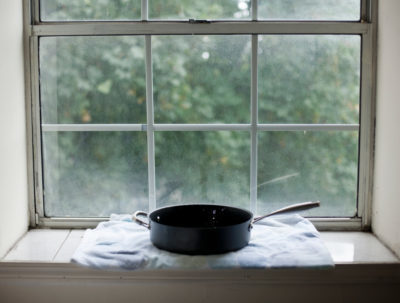My Roof is Leaking: Is it Covered by Insurance?

Part of being a homeowner means keeping up on important repairs, especially roof repairs. Owning a home is expensive, but it becomes even more expensive when you have to come up with thousands of dollars for an unexpected roofing job. Having the right home insurance can help save you hundreds of dollars when it comes to repairs, but if you haven’t looked at your homeowners policy recently, you may be surprised what is and isn’t covered by your home insurance.
Will insurance cover the leaking roof?
When you call your insurance agent to get a claim started, you may ask yourself– will my home insurance cover the roof leak? Your policy may cover the water damage or cost to replace the roof. Your insurance agent will send someone to assess the damage and get the claim process started.
In many cases, roof repairs are covered by home insurance. If there’s a wind storm that comes through and blows some shingles off or if a heavy snow storm damages your roof, insurance will likely cover the cost. If the damage was caused by an unavoidable event, you’re usually covered. You won’t be covered if damage is a result of neglect. If you’ve neglected to perform proper roof maintenance or if the damage could have been avoided with more care from the home owner, chances are you’re not covered by insurance.
Your best bet is to keep up with regular roof repairs. If there is an emergency, be sure to take the time to understand what is and what isn’t covered by your homeowners policy. To get a policy that provides you with the right amount of coverage, be sure to give us a call at [mapi-phone-link /] today.
Enter your zip code below to view companies that have cheap insurance rates.
Secured with SHA-256 Encryption
How do I spot a leak?
If you’re concerned about a leaking roof, the first thing you’ll want to know is how to spot a roof leak. Many circumstances, like weather, age, neglect, and decay can affect your roof, but there are three common signs that may indicate your roof is damaged and could leak in the next rain storm.
Buckling, curling, or missing shingles
Over time, shingles wear out. Water can seep through the roof and into your home when shingles crack or are broken. Wind, rain, hail storms, freezing temperatures, or even someone walking on the roof can all damage shingles. Every season, take a visual inventory of your shingles to see if they are still in good shape and still in place.
Ceiling or roof spots
If water has come through the roof, you may notice stains on your ceiling. Leaks can “travel” and show up away from the original source of the leak. Look for spots that may indicate a leak around vents or a chimney. If you have ceiling tiles, you’ll notice dark-colored spots if your roof is leaking
Debris in the gutters or on the roof
The debris and leaves that gather in the gutters will slow the water flow coming from the roof. When water doesn’t flow properly off the roof, it flows sideways, keeping the moisture on the roof. Moisture retention on the roof causes mildew, mold, and moss that will shorten the life of your roof. Be sure to remove debris from gutter and the roof every season.
I’ve found a leak, now what?
If you’ve found a leak, don’t ignore it. The longer you let a roof leak go, the more damage you’ll have. Water damage can be expense to repair. If you act quickly, you’ll be able to save your property from much of the water damage.
Once you have established your roof is leaking, you need to take steps to minimize interior damage. Move any items that might be damaged by water. This includes furniture, electronics, and valuables. Be sure to unplug electronics or disconnect the power before moving electronics. Place a bucket under the leak to catch as much water as possible. If you notice wall paint bubbling or blistering, take a small pin to puncture the bubble and release the water gathering in the wall.
Next, try to remove the water. Dry any water that has soaked carpet or furniture. Use old towels, mops, and buckets to soak up the excess water. You can dump water in sewer drains or into a permeable surface, like your lawn. You may want to use a wet/dry vacuum to suck up water from carpets or flooring. Fans can be useful too. A fan not only helps dry the water, but it also circulates the air, which can help prevent mold build up.
As soon as possible, you’ll want to contact a professional roofing company to assess the damage. Get a written estimate for any repairs or replacement. Don’t commit to any roofing repairs until you’ve contacted your insurance agent.
Have additional questions? Call [mapi-phone-link /] and speak with a licensed agent who can help review your policy with you!
Before making any final decisions on your insurance company, it is important to learn as much as you can about your local insurance providers, and the coverages they offer. Call your local insurance agent to clear up any questions that you might have. Questions to consider asking include, “What is the best coverage plan for me/my family/my situation?” “What are the minimum coverage requirements in my state and what form of coverage do you recommend?” “Do you guys offer any bundle discounts if I take out both my auto insurance and home insurance with you?” and “What is the average rate of insurance quotes you guys offer?
Before making any big insurance decisions, use our free tool to compare insurance quotes near you. It’s simple, just plug in your zip code and we’ll do the rest!
Free Insurance Comparison
Enter your zip code below to view companies that have cheap insurance rates.
Secured with SHA-256 Encryption
